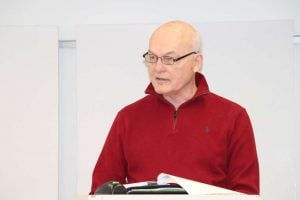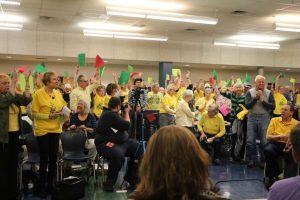
This is an op/ed submitted by Terry Maynard, co-chair of the Reston 20/20 committee. It does not reflect the opinions of Reston Now. It was updated on Sept. 27 with an editorial comment about the validity of the claims therein:
UPDATE: Mr. Maynard has acknowledged making a serious error in comparing the planned density of Reston’s TSAs to the density of Manhattan. Specifically, Manhattan’s density is not 26,000 people per square mile, it’s 72,000 people per square mile. Thus, Reston’s TSAs are not planned to become as dense as Manhattan, but could be as dense or denser than all the other New York boroughs. For more information, see Mr. Maynard’s detailed correction and apology in the comments section of this op-ed.
In a February 5, 2018 letter to Supervisor Cathy Hudgins, the Coalition for a Planned Reston (CPR)–a partnership of the Reston Citizens Association, Reclaim Reston, and Reston 20/20–called on the Supervisor to consider a variety of amendments to the Reston plan and to defer the Board of Supervisors’ plan to officially authorize advertisement of the proposed zoning amendment on March 6.
Given county claims that it needs to move forward with the increased density proposed in the Reston PRC zoning ordinance from 13 to 16 persons per acre because the Reston plan calls for it, the CPR letter and its recommendations focus on managing Reston’s growth in a way that would eliminate the need to increase zoning density.
Among other features, CPR’s recommendations for managing growth call for:
- A maximum population cap in all of Reston of 120,000 four decades from now at a time when its current population is about 62,000. This contrasts with the current plan’s language that would allow 160,000-180,000 people to live in Reston.
- Limiting density throughout Reston–including the Metro station areas–to 60 dwelling units per acre (DU/A) and limiting redevelopment in the Village Centers to the mixed-use areas only at a “neighborhood-serving” 30 DU/A.
- The elimination of special interest language permitting the massive–and inappropriate–redevelopment of the Saint Johns Wood apartment complex.
- The removal of the road that appears on two Reston plan maps across the Hidden Creek Country Club, opening it to development and endangering its future as a major Reston open space.
A second key theme in CPR’s recommendations is to build in assurances that the supporting infrastructure–road and parks especially–keeps pace with development. This is particularly true of the county’s need to acquire space for parks, schools, and other key infrastructure elements. The failure of Reston’s infrastructure to keep pace with recent development so far, including the extremely long lead times for major capital projects, has been a great concern of many Restonians. Part of this includes assurances that proffers generated by development are used in Reston.
The CPR recommendations also focus on assuring that new development is accompanied by a strong commitment to affordable housing, generally calling for developers to provide an onsite allocation of 20 percent affordable housing for each new project.
As these proposals suggest, CPR is anxious to see Reston grow, but to do so in a manner consistent with its creation as a planned community with a grand vision and vibrant planning principles. We believe that Reston’s future ought to continue to be planned and managed, not merely left open to effectively unconstrained commercial development as the current plan allows.
We hope Supervisor Hudgins sees that our proposals are consistent with that legacy and, following up on a meeting of RA and CPR leaders this week, will defer official county action on the PRC zoning amendment proposal. Then we can work with her and county staff to enable Reston to remain one of the world’s great planned communities.
Terry Maynard
Co-Chair Reston 20/20 Committee Member
Coalition for a Planned Reston
 Opponents of a proposal before the county to increase Reston’s population density continue to mobilize ahead of community meeting on Monday night.
Opponents of a proposal before the county to increase Reston’s population density continue to mobilize ahead of community meeting on Monday night.
The Coalition for a Planned Reston, a community organization that includes Reclaim Reston, Reston 20/20 and the Reston Citizens Association, will gather community feedback about the proposal and discuss specific changes to scale back Reston’s master plan in an effort limit the scale of development in the planned community.
The proposal, which will go before the county’s Board of Supervisors, would increase the maximum allowed population per acre in the Planned Residential Community district from 13 persons up to 16.
The zoning change could also open up Reston’s village centers to increased residential development. The proposal would allow the Board of Supervisors to approve developments above 50 residential units per acre within the district’s Transit Station Areas (TSAs) — so long as the projects comply with the area’s master plan that guides development.
Reston Association staff opposed the changes. In a letter, In the letter, the RA staff also asks county supervisors to hold off on any further consideration of the PRC density cap increase until RA staff and county staff together can examine the Reston Master Plan portion of the county’s Comprehensive Plan.
Meanwhile, the coalition will pitch amendments to Hunter Mill District Supervisor Cathy Hudgins before Christmas. Overall, the coalition is seeking to constrain density growth and ensure infrastructure keeps up to pace with development.
CPR hopes to maintain the intensity of opposition to the proposal, which eclipsed in late October during a 900-person public community meeting in Reston where an overwhelming majority of attendees opposed the proposal.
“We are anxious to present what we believe are reasonable Reston plan amendments to Supervisor Hudgins rather than just denoting a list of topic areas where changes could be made,” said Terry Maynard, co-chair of the Reston 20/20 Committee. “We are hopeful that the community will buy in to these proposals and possibly suggest some modifications and additions.”
Changes under consideration include reinstating a population cap throughout Reston which existed in the community’s 1989 plan; placing a cap on high-density, high-rise residential development, which the coalition stated is unlimited in the current plan; and phasing development with supporting infrastructure similar to the Tysons plan.
On a broader level, the coalition seeks to ensure county policies and standards that govern schools, parks and transportation are realistically in line with Reston’s growth potential.
CPR will also use the meeting platform to discuss other controversial zoning matters, including the “densification of Saint Johns Woods” and the addition of a road through Hidden Creek Country Club.
“The last minute inclusion by the Planning Commission of developer language allowing Bozzuto to re-develop St. Johns Woods at triple its current density is a perfect example of community exclusion in the development process,” said Reclaim Reston member Bruce Ramo.
The meeting will be held on Monday at 7 p.m. in the Reston Association Conference Center.

